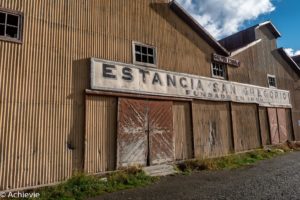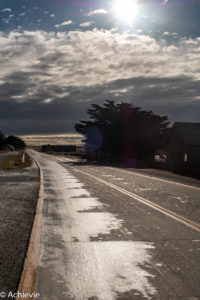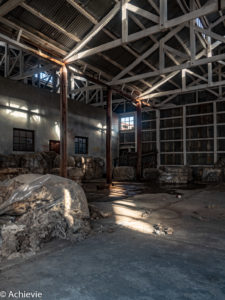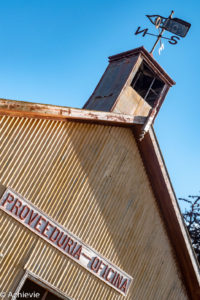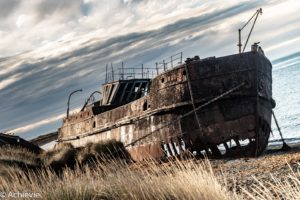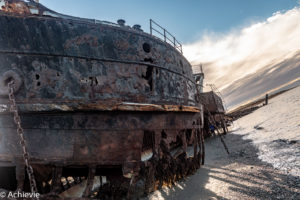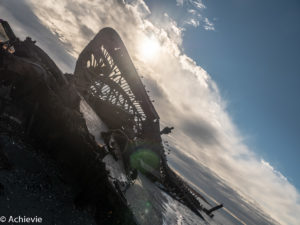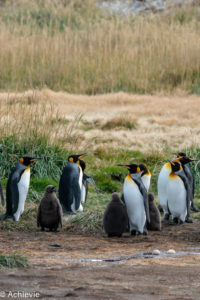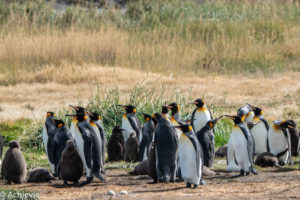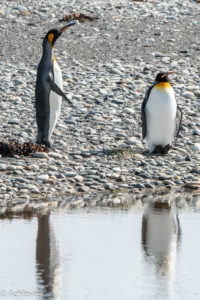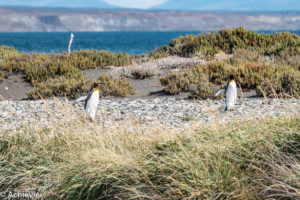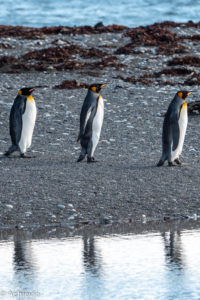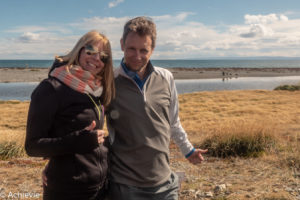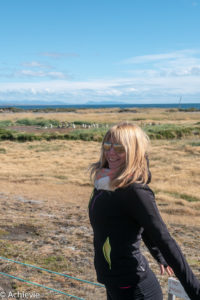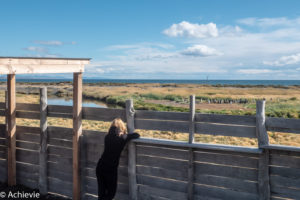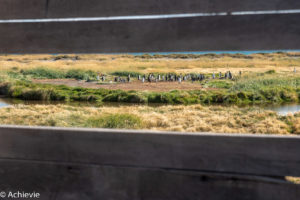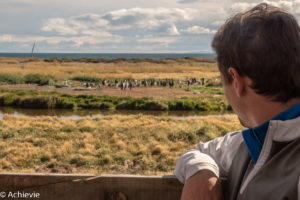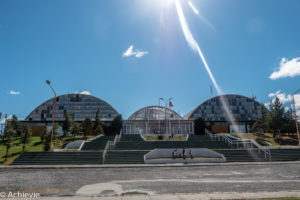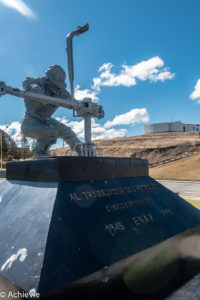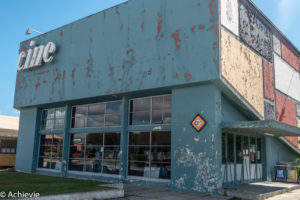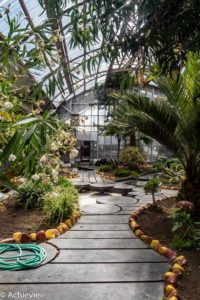Making your way to Tierra del Fuego
We booked the trip with Patagonia Full. The tour eventually turned out a little different than explained in the booking, but anyway. It mostly comes down to the same. With all the travel and the different stops, it’s indeed a full day tour: we left at 8am and we only got back at 10.30pm (I think we missed the boat that we were meant to take an hour earlier, but anyway).
Tierra del Fuego can be reached by ferry from the mainland. Tours typically depart from Punta Arenas. It should be possible to do this tour by yourself, but we (that is my husband) didn’t find everything online. We’ve found it at other occasions as well that it’s easy to book trips through travel agencies, but it’s a lot harder to do it on your own… Coincidence?
There’s 2 terminals to go to the island. The one, where you start in Primera Angustoro in Tierra del Fuego only takes about 20 minutes to reach by ferry – that’s the one we took in the morning, after a 2 hour drive from Punta Arenas to Punta Delgada. We made a stop at Estancia san Gregorio, which is a facility originating from 1878 from where wool was exported. It’s currently abandoned, but the first steam boat that was taken to get the goods across actually still resides on the beach a little further. In principle the tour should also include a visit to the Fernando Cordero Ruesque Museum, but as it was a Sunday when we did the tour, it wasn’t open.
On the boat, I saw 2 Commerson’s dolphins jumping by, but unfortunately couldn’t get them on camera. The ferry trip between Porvenir on Tierra del Fuego and Punta Arenas takes about 2 hours – that’s the one we took in the evening (sailing by the Magellan Strait). Then it’s only a 30 minute drive to Punta Arenas centre.
King Penguin population
As the name reveals, the penguins found here are King Penguins. The King Penguins are residential, so they can be visited here all year round.
Tierra del Fuego Island
The park is located on Tierra del Fuego – literally translated as Land of Fire. The name comes from the Europeans who first explored the islands and saw the different bonfires that were used by the natives for communication with the mainland. The Island is actually for a part Chilean and for a part Argentinian. Ushuaia is the most famous city entirely at the bottom of it.
The penguin park (Parque Pingüino Rey)
As indicated in the trip outlay, you only get 1 hour in the King Penguin park. That seems very limited, for a full day tour, but actually is just about enough time to fully enjoy it. There’s 2 areas where they mostly remain. You can watch them from about 15 meter distance. There’s a wooden “fence” in between the visitors and the animals, which I think makes a lot of sense, knowing how some tourists may act. There’re binoculars foreseen as well, so you can see each and every detail of them. As breeding season had just happened, there were quite a few chicks, which totally stand out from the others, with their dark grey fluffy feathers. Adorable.
As they go from one site to the other, they’re so funny to watch. It looks like it takes them forever, with their fins pulled backwards and their cute feet wiggling over the pebbles on the ground. Most of them stay in pairs. So sweet.
Other sites to see on the island
Of course, the penguins were the highlight of the trip. Next to the penguin visit, we mostly drove around the island (it just takes a while to get to the park – about 110km). We stopped at an adorable tiny restaurant – El Esfuerzo – where we got lunch. Only 7.000 CLP per person for a lunch menu, which actually tasted amazing and included soup, main course, a desert and even soft drinks. They offer a few choices as well, including vegetarian.
Other stops include a visit to the Cerro Sombrero camp, where oil was discovered in the area. The first movie theatre built in Chile is still there, and is still used by local residents (for free). As is a gym and a kind of tropical garden. Another stop was made at Selk’nam, which has a few statues that represent the original natives. As they were quite tall, one of the stories goes that the name “Patagonia” actually comes from the big feet of these natives.
Another tip – As you’re sitting quite a while in the bus, make sure to bring something to listen to with you. The views are amazing – as always in Patagonia – but having some music or podcast or whatever to accompany that is very useful.
Other Countries we visited
Have a look at the other countries we ‘achievied’ to visit, and other Achievies…
